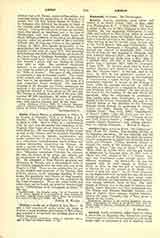

Amiot, JOSEPH MARIA, a missionary to China, b. at Toulon, February 8, 1718; d. at Pekin, 8 or October 9, 1793. He was admitted into the Society of Jesus in 1737. Sent to China as a missionary in 1740, he soon won the esteem and confidence of the Emperor Kien Long, whose language, the Tatar, he spoke fluently. His thorough mastery of this tongue as well as the Chinese, and his extensive knowledge of physics, literature, history, mathematics, and music, enabled him to give to the European world, in a voluminous correspondence, much striking and curious information concerning the Chinese. He made a special study of their music. Most of the important works of Amiot are found in the collection: “Memoires concernant I’histoire, les sciences, les arts, les meeurs et les usages des chinois, par les missionaires de Pekin” (Paris, Nyon aine, 1776-89). He composed a Tatar-Manchu grammar and dictionary in French, and a chronological table of the Chinese Emperors from the sixty-first year of the Empire to 1769. There are also articles from his pen on the weights and measures of the Chinese, their military science, music, language, teaching of their books, the geography and climate of their country, as well as historical treatises on the migrations of the Tatar-Tourgouths. These and other works, and where they can be found, are noted by Sommervogel iii his “Bibliotheque de la Compagnie de Jesus”, I, 294 sqq.
JOSEPH M. WOODS

